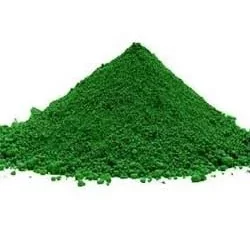Phthalocyanine Green Pigments For Plastics Explained: What You Need to Know
**Introduction**
Hello! I’m Alex, and today we’re diving into the vibrant world of Phthalocyanine Green pigments, specifically their application in plastics. Renowned for their brilliant hues and excellent stability, these pigments play a crucial role in coloring a wide range of plastic products. Let’s explore what Phthalocyanine Green pigments are, their unique properties, and why they’re a popular choice in the plastics industry, particularly focusing on the options provided by specialists in Phthalocyanine green pigments for plastics.
**
1. Understanding Phthalocyanine Green Pigments
**
Phthalocyanine Green is a synthetic pigment known for its:
– High tinting strength and brilliant green hues.
– Excellent lightfastness, making it resistant to fading in light.
– Good chemical and heat stability, suitable for various plastic applications.
This pigment’s unique characteristics make it ideal for imparting rich, long-lasting color to plastics.
**
2. Why Choose Phthalocyanine Green for Plastics
**
Phthalocyanine Green is favored in the plastics industry for several reasons:
– It provides uniform coloration and is easy to disperse in plastic resins.
– The pigment’s stability ensures color consistency in different environmental conditions.
– It’s versatile, suitable for a wide range of plastics, from packaging to automotive parts.
These properties make it an excellent choice for consistent and durable coloring in plastics.
**
3. Applications in the Plastic Industry
**
Phthalocyanine Green is used in various plastic products, including:
– Consumer goods like toys, containers, and household items.
– Industrial applications such as piping, automotive parts, and electrical components.
– Packaging materials, offering attractive and eye-catching colors.
Its versatility in application underscores its importance in the plastics sector.
**
4. Considerations When Using in Plastics
**
When incorporating Phthalocyanine Green in plastics, consider:
– The compatibility of the pigment with different types of plastic resins.
– Processing temperatures, as certain plastics may require specific heat stability.
– Regulatory compliance, especially for products like food packaging and children’s toys.
Understanding these factors ensures optimal use of the pigment in plastic products.
**
5. Trends and Innovations in Pigment Technology
**
The pigment industry is evolving, with trends including:
– Development of eco-friendly and sustainable pigment options.
– Advancements in pigment formulations for enhanced performance.
– Custom color solutions to meet specific market and consumer demands.
Staying abreast of these trends allows for innovative and responsible use of pigments in plastics.
**FAQs**
**Q1:** What makes Phthalocyanine Green pigments suitable for plastics?
**A:** Their high tinting strength, stability under various conditions, and easy dispersion make them well-suited for coloring plastics.
**Q2:** Are there environmental concerns with using these pigments in plastics?
**A:** Modern Phthalocyanine Green pigments are generally considered safe and environmentally friendly, but it’s important to choose pigments that meet relevant environmental standards.
**Q3:** Can the color intensity of Phthalocyanine Green pigment be adjusted in plastics?
**A:** Yes, by varying the concentration of the pigment, manufacturers can achieve different shades and intensities.
**Q4:** Are Phthalocyanine Green pigments used in food-grade plastics?
**A:** They can be used in food-grade plastics, provided they meet the regulatory standards for safety in such applications.
**Conclusion**
Phthalocyanine Green pigments play a vital role in coloring the world of plastics, offering durability, vibrancy, and versatility. As we explore the possibilities these pigments provide, remember that every plastic product around us, from the simplest household item to the most intricate industrial component, carries a touch of this pigment’s magic.
“The purest and most thoughtful minds are those which love color the most,” John Ruskin once said, and in the realm of plastics, Phthalocyanine Green embodies this love. Whether you’re in the manufacturing industry or simply a color enthusiast, understanding these pigments can deepen your appreciation for the colorful world of plastics. Let’s continue to explore and embrace the vibrant possibilities that Phthalocyanine Green pigments bring to our everyday lives!






